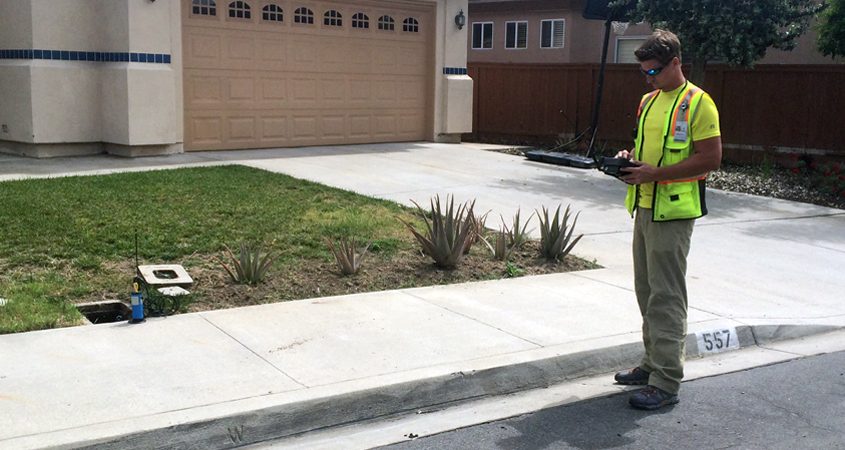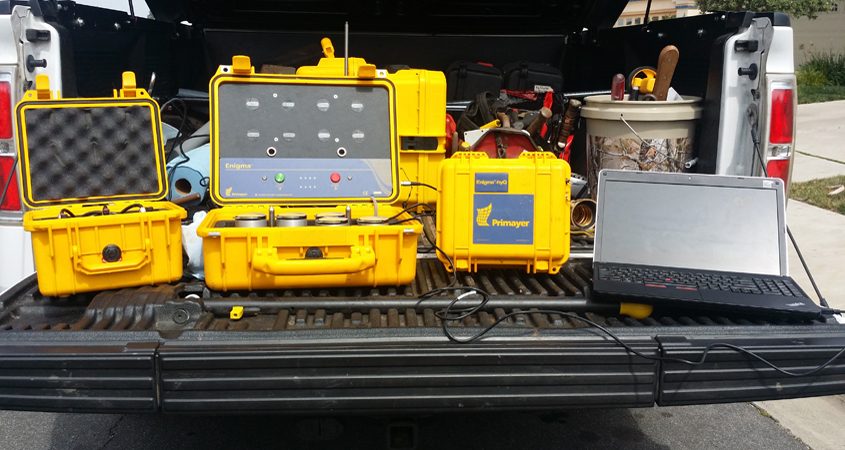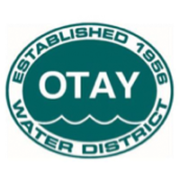Annual Leak Detection Program Gets Underway in Otay Water District
As part of its annual preventative maintenance program to safeguard its water supply and reduce water loss, the Otay Water District will conduct leak inspections of its pipeline system beginning January 30. Inspections are expected to continue until April 28. The District’s contractor, Utility Services Associates, will inspect approximately 171 miles of potable water mains in Spring Valley and Jamul, along with potable and recycled water mains in areas of Chula Vista.
Minor water leaks account for more than a trillion gallons of water wasted each year in homes across the United States. According to the EPA Fix-A-Week-Leak website, each average household with unaddressed leaks can account for 10,000 gallons of water loss every year, enough to wash 300 loads of laundry.

Since 2013, the proactive Leak Detection Program has identified 292 leaks that have been repaired by the District, resulting in an average annual savings of $54,000 per year from reduced water losses. Graphic: Otay Water District
For example, the EPA reports a leak just one-32nd of an inch in diameter (about the thickness of a dime) can waste 6,300 gallons of water per month.
Since 2013, the proactive Leak Detection Program has identified 292 leaks that have been repaired by the District, resulting in an average annual savings of $54,000 per year from reduced water losses.
“The Otay Water District conducts inspections annually in different communities we serve,” said Otay System Operations Manager Jake Vaclavek. “It is more critical than ever to insure we are not wasting water as we cope with our state’s ongoing megadrought.”
Workers conduct inspections weekdays through April

An effective leak detection and repair program is one of the main components for water conservation and an important part of asset management. Photo: Otay Water District
Customers may see workers inspecting the meter in front of their home or business, typically between 7 a.m. and 5 p.m., Monday through Friday. Weekend and night work may also be required. Inspections can range from a few minutes to a full day.
Inspection workers will wear a Utility Services Associates logo and carry company identification. They will not need access to the homes or property of customers. They may contact customers if they need to momentarily shut off their water supply for further testing. Water supply will not be shut off without permission from someone at the home or property.

The Otay Water District will continue its annual leak inspection through April. Photo: Otay Water District
Workers might lift water meter covers, inspect, and attach equipment to meters or valves. If they suspect a leak, the Otay Water District will contact the customer and advise them of the potential leak.
For questions on the Otay Water District Leak Detection Program, contact customer service at (619) 670-2222.
(Editor’s note: The Otay Water District is one of the San Diego County Water Authority’s 24 member agencies that deliver water across the San Diego County region.)



 Sweetwater Authority Logo 2019
Sweetwater Authority Logo 2019







